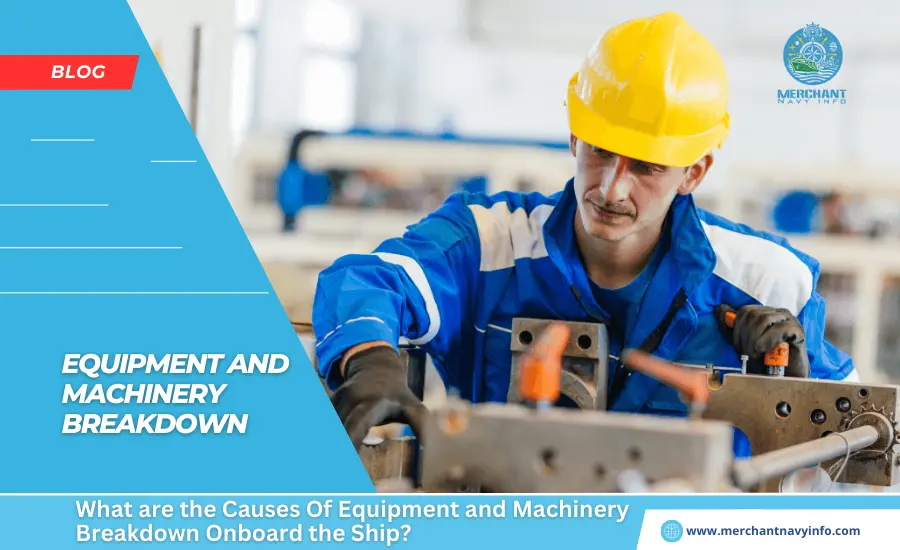
One of the most important qualities a marine engineer must possess is knowing and understanding their machinery. Before complete failure occurs, all machines exhibit various signs and symptoms that indicate the nature and severity of the failure. In addition to knowing the proper procedures for operating a ship’s engines. Sailors must also know how to identify and correct engine room problems. Below are types of maintenance onboard ship and the ship maintenance checklist.
Unusual Noise
Types of maintenance onboard ship Noise is the most important factor in drawing the attention of mariners to malfunctioning parts and machinery. A good observer can easily tell the difference between normal operating sounds and problematic sounds, even when away from the machine. For example, a hissing sound indicates a leak, a loud knocking sound indicates a loose or broken part and a high-pitched rattling sound indicates a blockage. Unfortunately, there are no instructions for learning these sounds. Only through experience can such skills be acquired.
Odor
Another strong indicator that is easily detected by the human senses is an unusual odour emitted by a machine or system. If there is a strong odour coming from nearby, there may be an oil leak, fire, high temperature, etc. A burning smell near the engine indicates that the coil temperature is rising. Even if you can’t see it, you can smell the heavy oil. Steam escapes and leaves behind a damp smell. Only when working on board can you perceive and understand different odours that indicate different problems with the machine?
High Vibrations
All mechanical systems with moving parts generate vibrations. One of the most neglected ship maintenance checklist tasks for machinery on ships is vibration analysis. Many transportation companies do not incorporate this into their planned ship maintenance checklist systems. The PMS also does not include the ability to control the tightening of the machine’s foundation screws in a timely manner. Every machine has its own vibration frequency. It is important to pay attention to increased vibrations from the machine. Ignoring it can cause serious damage in the long run. All changes are due to mechanical vibrations and are easily felt on board. This is a sign you should never ignore.
Leaks
Leaks are caused by defects in piping or mechanical systems. Easy to identify on board. Leaks from any type of machine should never be ignored. This can lead to spills, fires, floods, and other serious accidents. If you find any oil, water, or air leaks in your machine, repair them immediately or, depending on the severity, mark them as important to check on your next ship maintenance checklist schedule.
Smoke
The performance of any engine with a combustion chamber can be evaluated by checking the color and density of the exhaust smoke. To determine the combustion process, exhaust smoke from the main engine, auxiliary engine, boiler, etc., must be monitored. Black smoke indicates a problem with the fuel injection system or poor combustion (such as lack of air), while white smoke indicates water ingress into the fuel.
Parameter Abnormalities
Parameter abnormalities or variations are mainly related to machine errors. It is important to track all engine parameters on board by comparing logbook measurements with data from previous dates. During tours, deviations from parameters must be taken seriously with appropriate investigation and precautions.
Alarm
Each alarm indicates a major or minor problem on board. These were installed for the purpose of detecting errors. Oil mist detector alarms on the main or auxiliary engine should be taken seriously, even if other parameters (crankcase temperature, purge temperature, etc.) are normal. Numerous incidents have been reported where the crankcase exploded when the OMD alarm sounded but the crew ignored it because other parameters were normal.
Observing Problems in Connected Systems
In a ship’s engine room, most systems are connected to other systems or machines. If a problem is detected on one system, check other machines connected to that system. For example, if you have a problem with the expansion tank level dropping suddenly, check to see if there are any leaks in the main engine, generator, or air compressor connected to it. If there is a leak in the engine’s jacket water, high-pressure air will enter the surge tank during the compression stroke, emptying it through a vent or other opening.
Changes in Current
More than 80% of the machinery on a cargo ship is powered by electricity. H. With electricity generated by the ship. Be sure to verify the power of all electrically powered machines and pump systems. A high cleaner current indicates a problem with the clutch drum or transmission. Similarly, a high auxiliary fan current indicates that the purge pressure in the engine is higher than the pressure produced by the fan. Most vessels operate the auxiliary fan manually, so the fan must be stopped when pressure is reached or the current exceeds a marked limit.
Know Your Machine Inside Out
Last but not least, knowing your machine inside out can help you detect subtle changes in performance. Learning the history, reading ship maintenance checklist reports, and performing regular checks will tell you how the machine behaves and performs under different conditions. This makes it easier to identify faults when a machine system is behaving in an unusual manner. Detecting machine errors requires practice and experience.










